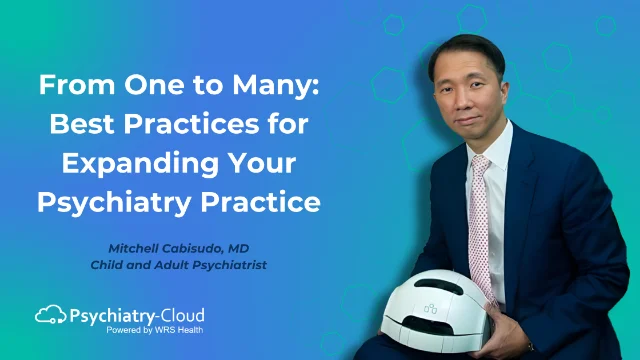Key Takeaways
- Seventy-eight percent of providers are unable to collect patient payment within 30 days for invoices over $1k.
- Empowering the front desk to perform patient billing upfront is key for better collection rates.
- Understanding the fundamentals of insurance aging can give you a clearer idea of opportunities for improvement.
Previously, we discussed the importance of a healthy revenue pipeline, the myth of the revenue “cycle,” and key metrics like claim rejection rates and clean claims. However, there’s another essential aspect of maintaining a sustainable practice that many organizations find difficult: collecting patient payment.
How do we know it’s challenging? Just look at the numbers. One recent report discovered that 78% of providers are unable to collect patient payment within 30 days for invoices over $1k. Coincidentally, the same study revealed an overwhelming 87% still rely on paper and manual processes for patient billing.
Collection Ratio for Patient Billing
Key Question: Is the patient billing process optimized?
The patient collection ratio measures the percentage of patient payments collected at the time of service versus those handled through a patient statement process. Why is this important?
Patient billing at the time of service is different from the traditional method of waiting for the insurance company to make the final payment, then invoicing the patient. And it’s important to dispel a widespread belief about billing patients that asking for payment at the time of service is improper or reduces patient satisfaction. Many plastic surgeons find that upfront payments lead to greater patient satisfaction, as individuals feel more invested in their care.
Additionally, there’s ample evidence that not collecting payment upfront can cause patients to perceive the encounter negatively and justify non-payment. For example, one study claims that 9 out of 10 patients prefer to know their payment responsibility upfront.
- It minimizes the number of steps in a process. Handling patient responsibility at the time of service results with fewer touches, events, or points in the process. The more steps during patient billing and collection, the more opportunities for errors, miscommunication, and lack of payment.
- It shortens the payment cycle and closure of an outstanding charge, and reduces patient aging balance. Waiting for patient invoicing to occur after insurance companies pay or burdening billers versus the front desk with sorting through patient responsibility lengthens the payment cycle and inflates the amount owed in aging.
- It improves patient satisfaction and positive word-of-mouth reviews. The time of service provides an opportunity to communicate and explain to the patient their responsibility for payment. Left to an invoice, patients are frequently confused by the charged amount and allowable amount, as well as what is their own responsibility. This is a frequent cause of negative reviews, as patients view the process as opaque, financially burdensome, and frequently unfair. There is no better time to explain what individuals can expect and what their financial responsibility is than at the time of service. Patients feel acknowledged and will typically make payment for what they owe through a clear and transparent process.
- It supports legal compliance with financial policy. Although many physicians may choose to extend leniency when it comes to patient billing, the practice’s financial policy provides an opportunity to clarify that the patient has an agreement with the insurer that includes them paying their fair share. The physician’s and/or practice’s contract with the insurer requires that you bill and collect the patient portion of your charge, lest you open yourself up to claims of insurance fraud. Finally, these relationships are distilled in policies and procedures that set the terms between you and the patient (i.e., your financial policy which the patient acknowledges having been provided, as well as the assignment of benefits policy, which they sign).
So why don’t more practices collect payment at the time of service? Often, it’s because the front desk lacks the necessary information and data, such as the services performed and the patient’s deductible, copayment, and coinsurance responsibilities.
This information is usually available in a well-constructed Practice Management System, but doesn’t always translate into a clear, defined process at the front desk. Without proper implementation, patient payment is often deferred to billing or later in the revenue “cycle.”
Start with the measurement. The first metric is the “Patient Collection Ratio,” which measures the dollar amount collected at the front desk versus what should have been collected. If a clear and transparent process is in place, this ratio serves as a scorecard for your front desk’s performance. This information can be obtained through automated reports or periodic audits of patient encounters. When shared with the practice and front desk staff, behavior typically adjusts toward achieving a 100% patient payment collection ratio.
Lowering the patient aging ratio and improving online reviews also contribute to the downstream benefits. When left unattended and uninspected, the results typically include unreceived payments that could have been collected easily at the time of service, patient dissatisfaction reflected in poor reviews, inflated patient aging, and the cost of repeat patient invoices and collection activities that could have been avoided if handled at the front end.

Insurance Aging Over 90 Days
Key question: Is the practice receiving prompt, correct, and complete patient payment?
- Aging over 90 days is a lagging indicator.
- Divide patient aging and insurance aging into separate categories and processes.
- Once the optimal state and measurement are achieved, use over-90 day aging as a guardrail measurement to ensure that all processes that contribute to the health of this measure are properly executed.
Insurance aging over 90 days is both an absolute amount (the amount owed that hasn’t been paid within 90 days) and a percentage (the amount owed over 90 days divided by the total amount owed). This ratio should be kept low; less than 20% is acceptable, but even lower is optimal.
Aside from the actual ratio or value, it’s worth thinking about measurement as a continual pursuit of improvement. First, note that aging over 90 days is a lagging indicator. If the ratio and/or the absolute value are increasing, it indicates a need for upstream (earlier) corrections in the patient billing workflow. A trend of aging over 90 days—whether recent or historical—is a true sign of billing dysfunction.
So how do you read into the numbers? Separate patient aging and insurance aging into different categories. Why? Because we handle patient responsibility differently from insurance responsibility.
Patient responsibility: First, focus on collecting payments at the time of service. Uncollected amounts should be handled by an invoicing subprocess. Automating processes—including online payments, patient portal access, and follow-up visits—provides the best opportunity to receive payment and close the claim on time. For unpaid amounts after invoicing, use pre-collection notifications and a collection process—features offered by advanced patient payment solutions. Define processes and rules for writing off uncollectible patient debts and managing aging.
Insurance aging: Second, divide insurance aging over 90 days by insurer, location, provider, service type, and other useful categories to manage aging and seek owed payments. When over-90-day aging increases, identify root causes such as timely and accurate billing, effective denial management, changes in insurance payments, a lack of credentialing, and other reasons for delayed payment. Proper billing should result in prompt payment. If a single insurer or provider shows a disproportionate trend, investigate and correct the underlying issue.
So how do you deal with lagging indicators in general, of which insurance aging over 90 days is a single case? Optimize all processes contributing to this measurement. Use 1-2 week sprints to sequentially improve these processes.
After optimizing, use the lagging indicator as a guardrail to ensure proper execution. If the indicator stays within the desired range, it suggests all contributing activities are executed properly.
Elevate Your Patient Billing With Patient Payment Solutions
Achieve Better Financial Workflows With Our Medical Billing Services











